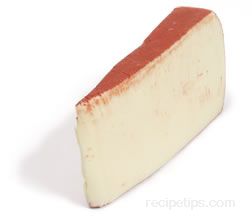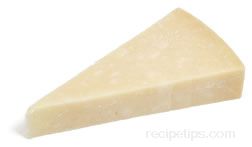Cheeses of Italy: Asiago to Crucolo
AsiagoA type of Italian cheese made from cow's milk. It has a hard texture and a nutty flavor. Like Parmigiano cheese, it is produced in the shape of a wheel. Asiago is one of the better substitutes for Parmigiano. |
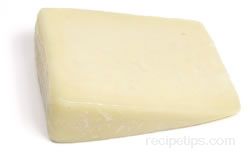 |
Baita FriuliMade in the Friuli region of northern Italy, Baita Fruili cheese is produced from pasteurized cow's milk. Aged from four months to over a year, Baita Friuli has a dense, firm texture with small eyes throughout the cheese paste. The cheese has a fruity and slightly spicy flavor similar to Asiago or Swiss Gruyere. Served as a table cheese or a cheese for grating into salads, it can also be enjoyed as a snacking cheese or served with fruits, such as pears or grapes. Baita Friuli can be used in pasta dishes, casseroles, and meat dishes. When served with wine, it pairs well with Zinfandel, Pinot Noir, or a number of heartier red wines. |
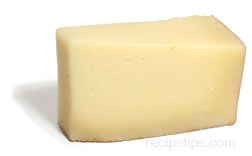 |
Bel PaeseBel Paese is an Italian cheese with a pale yellow color, soft texture, and mild flavor. It is one of the most popular Italian cheeses and was originally developed in the 1920's. Bel Paese is now produced in Brazil and the U.S. as well as in Italy. |
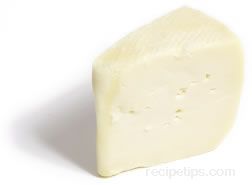 |
Bianco SottoboscoProduced in the Piedmont region of Italy, Bianco Sottobosco cheese is a hand-made in the manner of an artisan cheese. Made from a combination of cow's milk and goat's milk blended with bits of black truffles, Bianco Sottobosco Cheese is aged in mountain caves for 40 to 60 days before being sold in markets. When matured, Bianco Sottobosco becomes somewhat dry in texture and with the truffle influence, quite earthy in flavor. This cheese can be served with fruit, dark breads, and robust wines. |
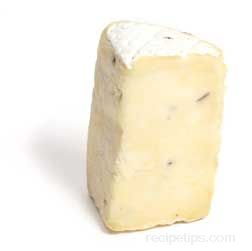 |
Bra DuroProduced as an Italian farmhouse cheese from cow's milk, Bra Duro Cheese is a "sister" cheese to the Bra Tenero cheeses, which differ only in the length of aging. A Bra Tenero cheese is aged for slightly less than two months, while a Bra Duro cheese ages for three months minimum. Some cheese producers allow the cheese to age for much longer periods, enabling a sharper flavor to develop. The term Duro is the Italian word for rough or rugged, which describes the coarse outer rind. |
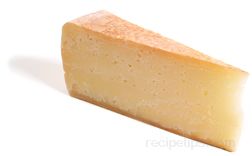 |
| Bra Duro Cheese is filled with numerous small eyes. It is darker yellow and semi-firm to firm in texture. It has a flavor somewhat similar to cheddar cheese; however, sharp and somewhat nutty tasting best describes the flavor of this cheese. Bra Duro is a good cheese to use for snacking or for grating as a topping on pasta and casseroles. The cheese goes well with a medium-bodied red wine or an amber beer. | |
Bra TeneroMade from cow's milk, Bra Tenero is a farmhouse cheese from Italy that is aged for only five to seven weeks. If it is aged for longer periods than that, it is known as Bra Duro Cheese, which is a "sister" cheese to the Bra Tenero cheeses. A Bra Duro cheese is aged for 3 months minimum. (Most often it is aged for much longer periods in order to develop a sharper flavor.) Semi-firm in texture, Bra Tenero Cheese has a mild cheddar-like flavor. It is pale ivory and contains many small eyes. Bra Tenero Cheese is a good choice to use as a table cheese or as an appetizer, and it can be paired nicely with light-bodied red wines or a variety of white wines. | |
BraidedA form or shape that is, as the name implies, twisted lengths of cheese intertwined to create a thick round braid, similar to a braided rope. This cheese, much like string cheese, is a pliable variety that can be formed into a braided shape. Common varieties that are braided include mozzarella and asadero, which is a Mexican variety. Armenian, Italian, and Syrian cheeses are also commonly produced as braided cheeses. |
 |
| Braided cheese can be made from raw milk or skimmed milk. It can also be made by combining sour milk with fresh milk and then produced by using the spun-curd method of cheese making in which the curd is heated at a low temperature to develop the elasticity that allows it to be twisted and formed into shapes. It is then cut into strips, braided, and salted in brine for curing. Braided cheese is produced unflavored, seasoned, marinated, and smoked. Because of its unique appearance, it is often served as an appetizer or as a stuffing for pocket breads, enchiladas, and other similar food products. | |
BranziAlso referred to as Mountain Banzi Cheese, this variety of cheese is produced in the mountainous region of Lombardy, Italy where the cows graze in alpine pastures. Made from pasteurized and unpasteurized cow's milk, Branzi Cheese is aged for several months, developing a texture that contains numerous small holes surrounded by a semi-firm paste, which becomes firmer as it matures. Branzi cheese has a mild nutty flavor, and it is often paired with polenta and mushrooms to make a savory vegetable and cheese dish. Branzi cheese melts easily when used in baked foods, and it is often used as a snacking and appetizer cheese. |
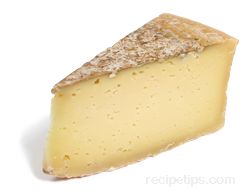 |
Brine-curedA reference to numerous types of cheese that are washed with, or submerged into, a brine bath as part of the cheese making process. The cheese must remain in the brine for several hours to several months depending on the type of cheese being produced. The salty brining solution helps to limit the growth of unwanted bacteria that can produce a foul taste in the cheese (although in other stages of the cheese making process, some types of good bacteria are necessary for producing the cheese). The brining solution provides cheese with a slightly salty, savory flavor that is quite desirable in many types of cheese. |
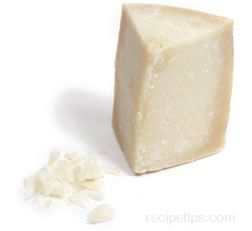 |
| One of the most famous Italian cheeses, Parmigiano-Reggiano (or Parmesan, as it is generically called in the United States and other countries), is soaked for about three weeks in a brining solution containing Mediterranean Sea salt. When the cheese is removed from the brine, it is allowed to age for an average of two years, which gives the renowned Italian hard cheese its somewhat gritty texture and distinctive nutty flavor. | |
BurrataA cheese from southern Italy produced from cow's milk. Initially, Burrata cheese was produced only from the milk of Podolian cows, but today, it is produced from other varieties of cows as well. Classified as a "spun" or "pulled curd" cheese, Burrata has a soft buttery inner texture similar to ricotta, which is creamy and oozing. |
 |
| When Burrata cheese is produced, a combination of fresh heavy cream and mozzarella curds (that have not been spun) are used. The combined ingredients are placed into the center of a thin skin made from fresh mozzarella that is formed into the round shape similar to the shape of a cloth bag or bag coin purse. Mildly sweet in flavor, Burrata cheese is not aged; it is sold immediately after being produced. Often wrapped in a leaf from the asphodel plant, most of the Burrata Cheese that is produced is intended to be eaten within several days. This cheese is often served in salads, in pasta, or as an appetizer with hard crusty breads. It can be stored for only several days before it loses its full flavor. | |
CaciottaConsidered to be one of the traditional farmhouse cheeses that are rural and artisan in nature, Caciotta cheese has been made in the Italian regions of Umbria and Tuscany for many years. It is produced from a blend of 70% ewe's milk and 30% cow's milk. Popular throughout Italy, Caciotta cheese has a semi-soft texture with a creamy firm consistency and a flavor that ranges from mild to tangy as it ages. Caciotta cheese is often believed to be somewhat inferior to the Pecorino varieties, which are made from 100% ewe's milk; nevertheless, Caciotta cheese is very flavorful and can be used in a many of the same ways that Pecorino is used. Caciotta cheese may also be referred to as Casciotta cheese. | |
CastelmagnoCastelmagno is a traditional farmhouse cheese that comes from the Piedmont area of northern Italy. Often hard to find, it is a pressed curd cheese made from the partially skimmed pasteurized and/or unpasteurized milk of cows, goats, or sheep. It may also be made from a combination of milk with sheep's milk and some goat's milk added to cow's milk. This cheese is one of the oldest varieties made in Italy, dating back to the 13th century. When formed into wheels, the cheese typically weighs from five to fifteen pounds. It is allowed to age from two to six months in moist cellars. Occasionally, a blue mold may develop within the cheese, which gives Castelmagno a noticeably tangy flavor. As the cheese ages, it develops a pungent earthy aroma similar to mushrooms. In addition, a rough reddish-yellow natural rind develops covering a straw-colored interior paste. With a mildly nutty taste and a slight tartness, Castelmagno develops into a firm-textured cheese with a flaky consistency that is dry and somewhat crumbly. It is a good cheese to use for grating or as a topping for appetizers. It goes nicely with robust red wines. | |
CastelrossoThis old world variety of cheese comes from the Piedmont region of northern Italy. It is not often found in stores. Produced from highly acidic pasteurized milk of Bruno Alpina and Pezzata Rosso red cows, Castelrosso is a relative of Castelmagno cheese, which is also produced in the Piedmont area of Italy. As it is processed, Castelrosso cheese is formed into small wheels weighing six to eight pounds each, which are aged in underground cellars for approximately one to three months. During the aging process, the cheese emits an earthy aroma that is only slightly pungent. The outer rind begins to gray, and a straw to yellow-colored mold may develop as it ages. The rind covers a bright white, firm but crumbly-textured inner paste that begins to soften as it matures. |
 |
| Castelrosso cheese has a mildly rich flavor with a soft tangy and fruity overtone. Some compare the flavor of this cheese to mild cheddar. It goes well with fruits and hard salami and can be served as an appetizer cheese or can be used in baked foods. Castelrosso cheese is also commonly used for making sauces that are served over pasta and gnocchi. It goes well with a lighter red wine or a smooth chardonnay. Castelrosso may also be referred to as Toma Brusca. | |
CrescenzaNative to Italy, this variety of cheese is very similar to an Italian Stracchino cheese. Made from whole cow's milk, Crescenza is a fresh cheese that matures for only two to five days before being sold. If it ages for one to two weeks, the cheese expands in size; thus the origin of the name crescere, means "to grow" in Italian. Sold fresh, Crescenza has a moist texture with an acidic flavor somewhat similar to yogurt. The cheese was first made in Lombardy, Italy and areas adjacent to this northern Italy region where it is commonly served as a snacking or appetizer cheese with fruit, aged meats, olives, and bread. Crescenza cheese is also a good dessert cheese and for use as a filling in various stuffed pastas. | |
CrucoloProduced in small quantities as a farmhouse or artisan cheese, Crucolo is made from unpasteurized cow's milk. The Trentino region of northern Italy is the area best known for this type of cheese where it is molded into a wheel weighing approximately one to two pounds. Ivory tan in color and creamy in texture, Crucolo has a mild buttery flavor with a slightly tangy overtone. The paste of this cheese contains numerous small holes throughout, and it has the appearance and elastic feel of Swiss cheese. Crucolo is a good snacking or appetizer cheese and is often served with grapes and light crackers. |
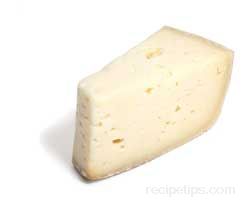 |





